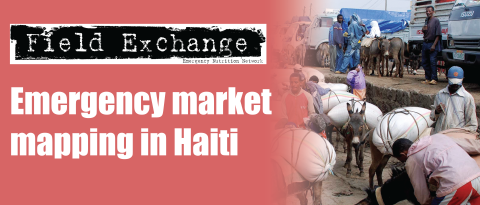Can anthropometry measure gender discrimination?
Summary of published research1

A baby girl in Bangladesh.
Sex differences in life expectancy and child survival in Bangladesh have been attributed to discrimination against girls and women and to mothers' low social status and lack of power within the household. A recent study used a large data set of Bangladeshi children's heights and weights to explore whether anthropometry can be used as a tool to examine gender discrimination. In the past, anthropometric data from nutritional surveys in Bangladesh have not reflected the patterns of gender discrimination shown in mortality and demography data. This apparent discrepancy may be explained by the growth references used to calculate standardised nutritional indices.
The study analysed the linear growth of a large sample of Bangladeshi children (> 500,000) aged 6-59 months using the new World Health Organisation (WHO) growth standards and, for comparison, the National Centre for Health Statistics (NCHS) and 1990 British growth references. Height-for-age was examined on the basis that this may be the most sensitive indicator of longer-term discrimination in health care and feeding. Trends in stunting were examined from 1990- 1999, a decade during which gender discrimination in Bangladesh is thought to have diminished. The focus of the analysis was on the group aged 6-23 months, as this is the age at which gender differences in health and nutrition have been shown to emerge due to an increased reliance on non-breast milk intakes and vulnerability to diseases. The data were collected by the Nutrition Surveillance Project (NSP) of the Helen Keller Institute (HKI) and the Institute of Public Health Nutrition. The NSP collected data every two months on randomly selected samples of children in rural Bangladesh.
Three key findings emerge from the study. First, conclusions on sex differences in growth of Bangladeshi children depend on the norm used. The three sets of growth curves present conflicting pictures of the relative growth of girls and boys, in relation to both age and time. Second, conclusions also depend on the method of analysis used to examine the growth curves, whether in relation to their shape (i.e. an assessment of growth faltering or catch-up with age that captures cumulative and gradual sex differences) or their relative position (i.e. a simple comparison of average Z-scores or stunting prevalence at a specific age). Finally, there is value in using a large test population to explore a specific application of a growth norm. This may also serve to expose other important issues, such as the continued problem of age determination and digit preference in nutrition surveys.
The author asserts that it is encouraging to find that the WHO standards uniquely present Bangladeshi girls as faltering faster or catching up slower than boys throughout their pre-school years, a finding consistent with the literature on gender discrimination in Bangladesh. Yet, confusion arises if Z-score averages for a specific age group are compared. For example, use of the WHO standards for children 6-23 months of age gives girls higher average Z-scores than boys. The author concludes that there a number of technical and practical implications of these findings.
There is a need for further research to examine the causes behind the differences in the growth curves produced using the three norms, bearing in mind that differences reflect variations not only in the reference populations used but also the methodologies applied to construct the growth curves. Such research should also examine sex differences in growth in infants under 6 months of age. Practical implications relate to the fact that anthropometric data are routinely collected and analysed throughout the world and that this affords the opportunity to ensure that gender discrimination is monitored and reported upon as a matter of course. Further research and debate are needed to determine whether and how this can be achieved.
Finally, the ongoing global process of implementing the new WHO international growth standards presents an opportunity to explore the role of anthropometry for gender analysis. At the same time, research is needed to corroborate or dispute the study findings and to help establish whether and how the WHO international standards can most meaningfully be used to measure and monitor gender discrimination.
1Moestue. H (2008). Can anthropometry measure gender discrimination? An analysis using WHO standards to assess the growth of Bangladeshi children. Public Health Nutrition, September 2008, pages 1-7
Imported from FEX website


